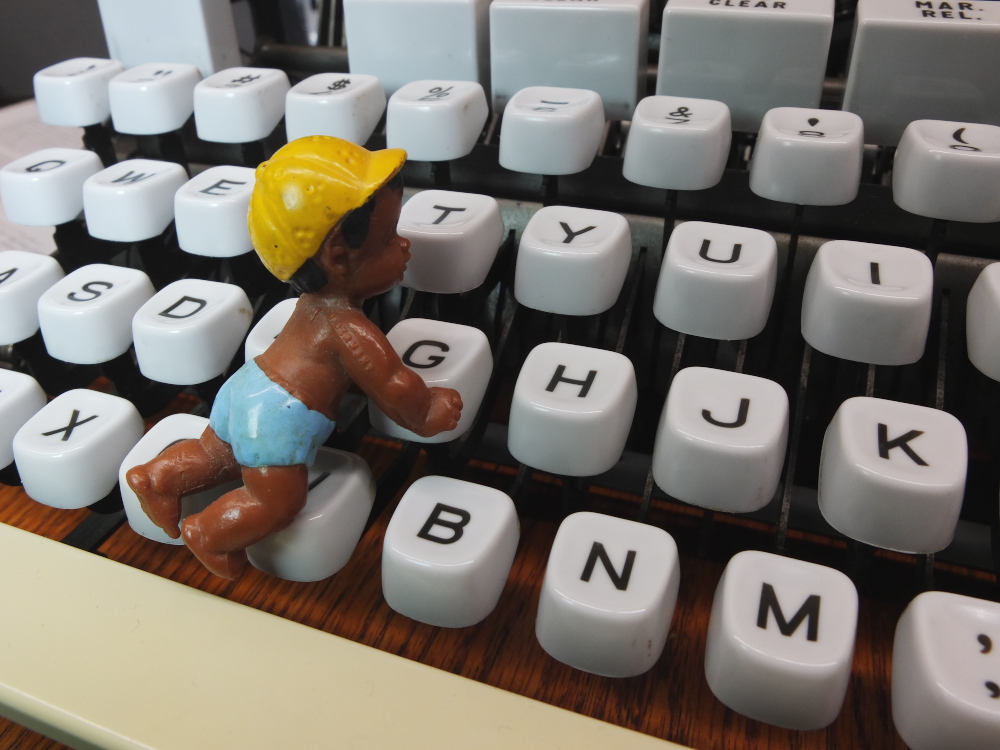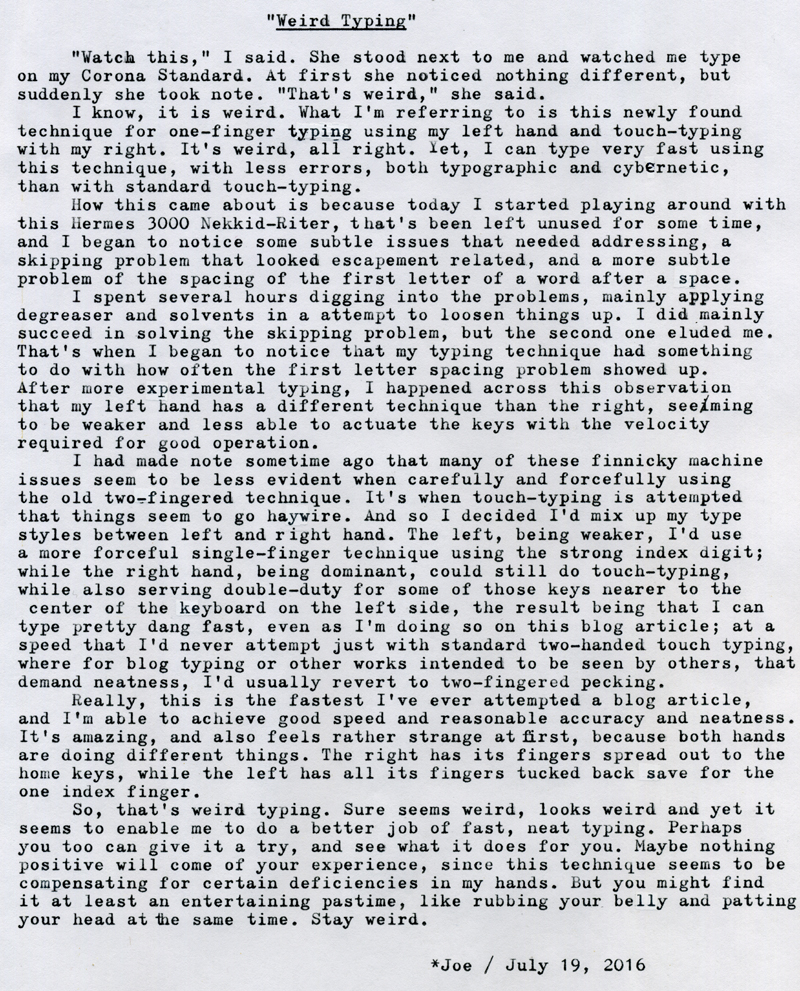Weird Typing


Post-Script: I think this weird typing discovery came out of some intensive typing sessions this last week, during which I was purposefully touch-typing a lot on my newly acquired Corona Standard, whose ergonomics are wonderful and exhibit none of the issues the Hermes 3K showed. Wanting also to rapidly type on the Nekkid-Riter led to my discovering these subtle problems needing fixing, which in turn led to the fact that, at least for mechanical typewriters, I'm now weird typing. Interestingly enough, when I try this same weird typing technique on my PC keyboard I get none of the good effects. It's certainly a mechanical issue between my hands and the machine; something I've come to term "cybernetic," since manual typewriters are one of those few devices that truly operate as an intimately connected system of body and machine.
Regarding the last blog article, about Type-Texting, I haven't yet taken the time to practice, as I've been consumed in my spare time with YouTube videos and some film photography. But I've finished the book "Track Changes," an authoritative history of the word processor, and I garnered lots of thoughts along the way about typewriters and their place in the modern writer's work-flow; which I might write about in the coming weeks. Some of those touch-typing session, alluded to earlier, involved brainstorming some of my thoughts on this subject.
Inspired by the book on word processors, I dug out an old MSI Wind netbook computer that's been sitting in a cabinet for the last five or six years. Its WiFi is essentially nonfunctional, but it does have installed a version of Open Office, so it's essentially a non-Internet connected word processor. I did a bit of writing with it too, fleshing out some of those manually-typed pieces done on the Corona, and so I've used this as an opportunity to experiment with combining typescript into an otherwise all-digital writing process.
Labels: Corona Standard, Hermes 3000, Nekkid-RIter, typewriter repair, weird typing, word processors

5 Comments:
I think I'd get confused touch typing with one hand and finger typing with the other.
I'm trying your technique right now. It seems ro boek -- to work bettee than I expecred ... or not!
This is kind of how I've typed on computers for as long as I can remember, actually! I use three fingers on my left hand and one on my right. Not sure how I stumbled upon this arrangement.
On Spring break during my last semester at college, I got my middle finger in the path of a rotary hedge trimmer, with the blade spinning at 10,000 rpm. It required 30 stitches and about 2 hours to get back in shape, and months of healing. The finger was wrapped with a splint to protect the damaged tip, so I typed my term paper with only 3 fingers on my left hand. The middle finger couldn't bend so it stuck straight out, and the fourth finger would cover two columns of keys. I got pretty proficient at it, and kept typing that way for several years, because the tip of the injured finger was very tender. Finally, about 10 years later, I decided I should start using the middle finger again when typing.
I'm wondering if your skipping problem might be related to the touch adjuster. Maybe if you set it for a harder touch, it wouldn't skip at times. The lighter touch allows a slower movement, which gives it time to skip. With the heavier touch, you have to hit it harder, so it goes faster. It usually skips if you move the key very slowly.
Thanks, Phil. The skipping problem on the H3K I consider resolved, at least for now. The other problem involves the first letter of a new word, after a space between words. That first letter seems to imprint a half-space ahead of where it should be, as judged by the letters in the previous line. So the space between words is narrow than it should be; and there's a bit wider space between first and second letter.
This machine is a half-space machine (the carriage indexes a half space as the type bar is rising, and another as it's returning), but on this one, the first half space motion of all the letters and spacebar is much shorter than the second half space.
It's weird; and intermittent.
Post a Comment
<< Home